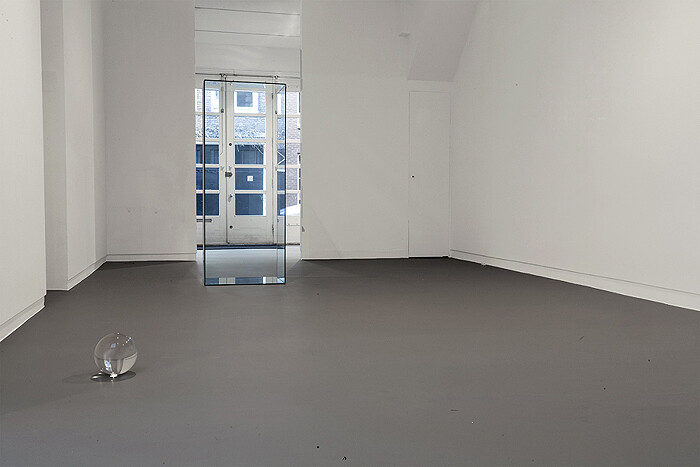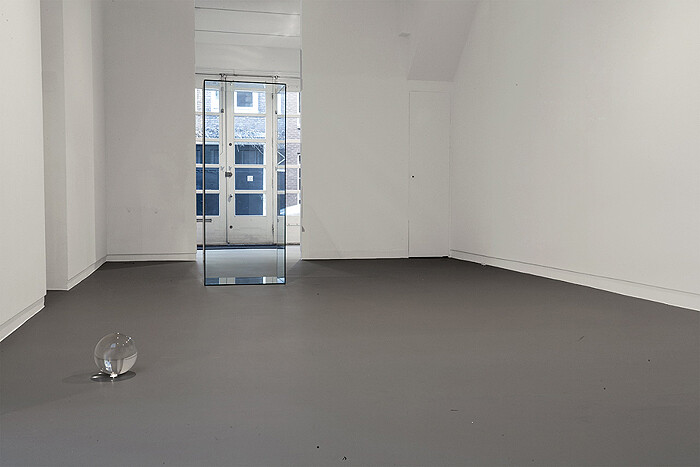The title of Wilfredo Prieto’s solo show at Annet Gelink Gallery in Amsterdam is as witty as it is tricky. “The Emperor’s New Clothes” takes its name from the well-known 19th-century tale by Hans Christian Andersen on vanity, cunning, and the willing suspension of disbelief, a tale about a narcissistic emperor who is more concerned about his looks than the welfare of his kingdom. One day he is visited by two travelling tailors who offer to make him a magical suit from the most beautiful fabric that is—and this is the crux of the fable—invisible to the stupid. He falls for it, and so do his ministers, the lot of them afraid of being labeled “stupid,” leading in the end to a naked emperor parading the streets.
Prieto likes paradoxes: his show at MARCO, Spain, earlier this year, was based on a tale, penned by the 14th century scholastic French philosopher Jean Buridan, called “Buridan’s ass” about the donkey who perished because he couldn’t chose between a pail of water and the bundle of hay. But “The Emperor’s New Clothes” is far more complex. With hardly anything to see in the gallery, we wonder who we are framed to be: the vain emperor who pretends to believe in the fictitious clothes weaved by Prieto, the trickster? And who is the innocent child at the end of the tale who finally dares to say what everyone is thinking: “there is nothing to see!” Or is the parable meant as a metaphor for the commercial art world where value is created “out of thin air”?
Before the opening of his show, I asked Prieto what role he sees himself playing. His answer was ambivalent. He told me that he moves from being the emperor—by taking the risk of believing in the new works and, as such, standing naked in front of the audience—to being part of the public and trying, just as we are, to decide whether there is, metaphorically speaking, anything to see.
So what is there to see? The first impression is of an almost naked gallery space. Our attention is drawn to an empty vitrine standing in our immediate line of vision; it’s vertical and about the height of an average man. The other objects are made of transparent glass or other light materials that become nearly invisible inside the white cube: an empty fishbowl; two identical medicine bottles (filled with a transparent liquid, one poison, the other its antidote); a tiny, tiny diamond on the floor; a little puddle of water; some shattered glass; a crystal ball; and, downstairs, in the smaller project space called the Bakery, there is the biggest object of all: a supersized ball of plastic wrap, bigger than the biggest snowball you’ve ever seen.
What we experience when seeing the work and how that experience can be so much more than what the objects objectively stand for is what fascinates Prieto. The crystal ball for example is simply a ball of glass. It is a nonentity until it is activated by a soothsayer. A vitrine holding nothing becomes useless as it is only activated by what it contains (and in this case, it’s only our vague reflection when we stand before it, making us into the object on display). It is the idea and not the material that pushes and steers Prieto’s working process. Wary of letting materials dominate him, he tries to be as neutral as possible in working through the ideas, so as not to distort them. In that sense, there are no formal constraints to his work. But there are formal qualities at play in “The Emperor’s New Clothes,” such as the link between Dust Magnified by a Diamond (all works 2011) and Spark. The shattered glass of Spark almost reaches the area by the wall where the diamond is situated, threatening to engulf and indeed nullify this small sparkly thing on the floor. Or between the round Fish Bowl without Fish, Uncertain Future, and the much larger plastic wrap ball, The More That Is Added, the Less You Can See. Or for that matter the links between the empty vitrine and the empty fishbowl, both rendered as useless, empty forms.
The Cuban art critic Gerardo Mosquera tried to encapsulate Prieto’s working methods into a deceptively simple equation: net idea + simple work = maximum meaning. I’ll take that notion a step farther: minimal interference of x plus an unknown variable y = maximum effect-b. The x, y, and b are the variables seen or unseen, depending on what clothes you’re wearing.







